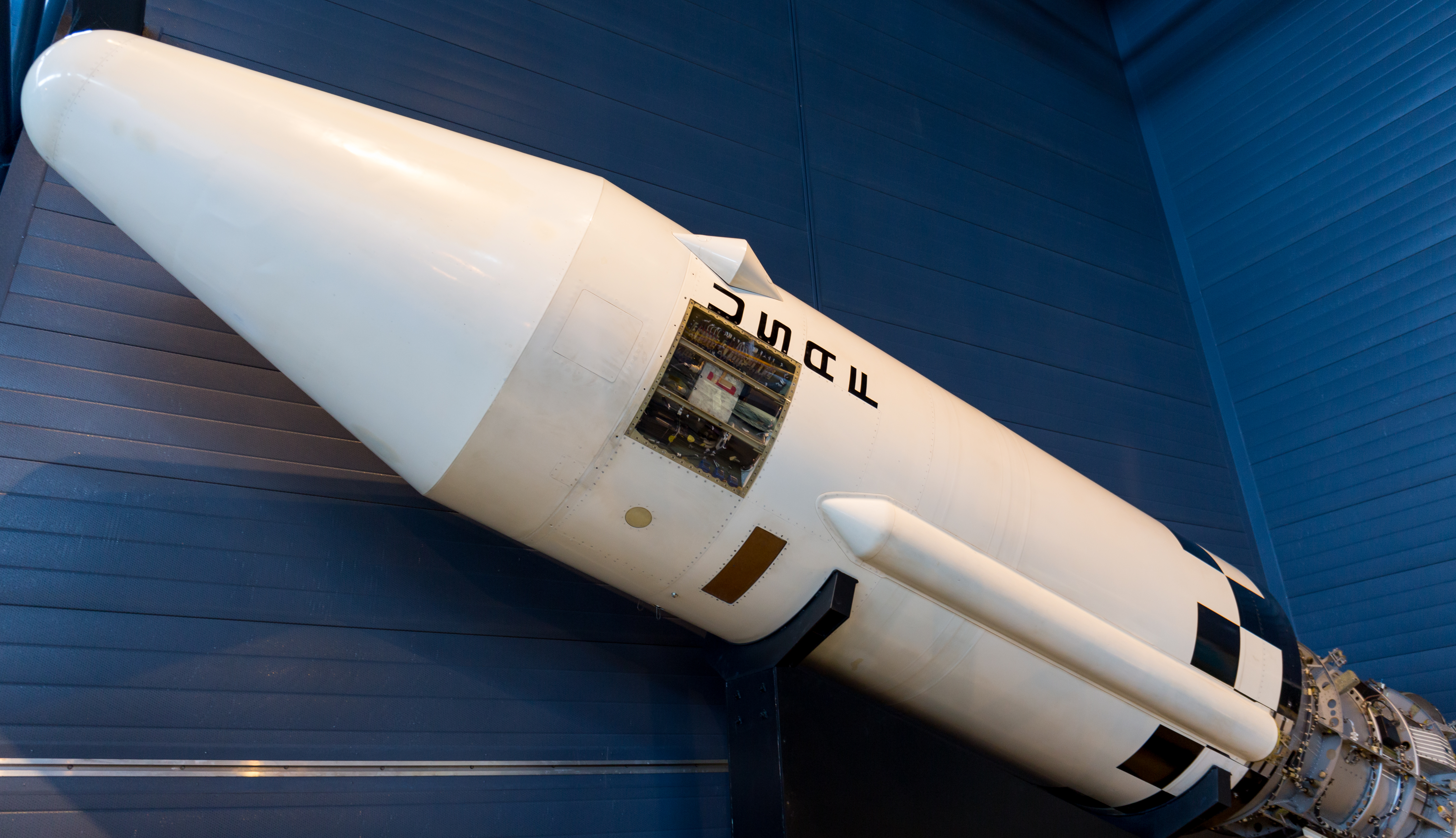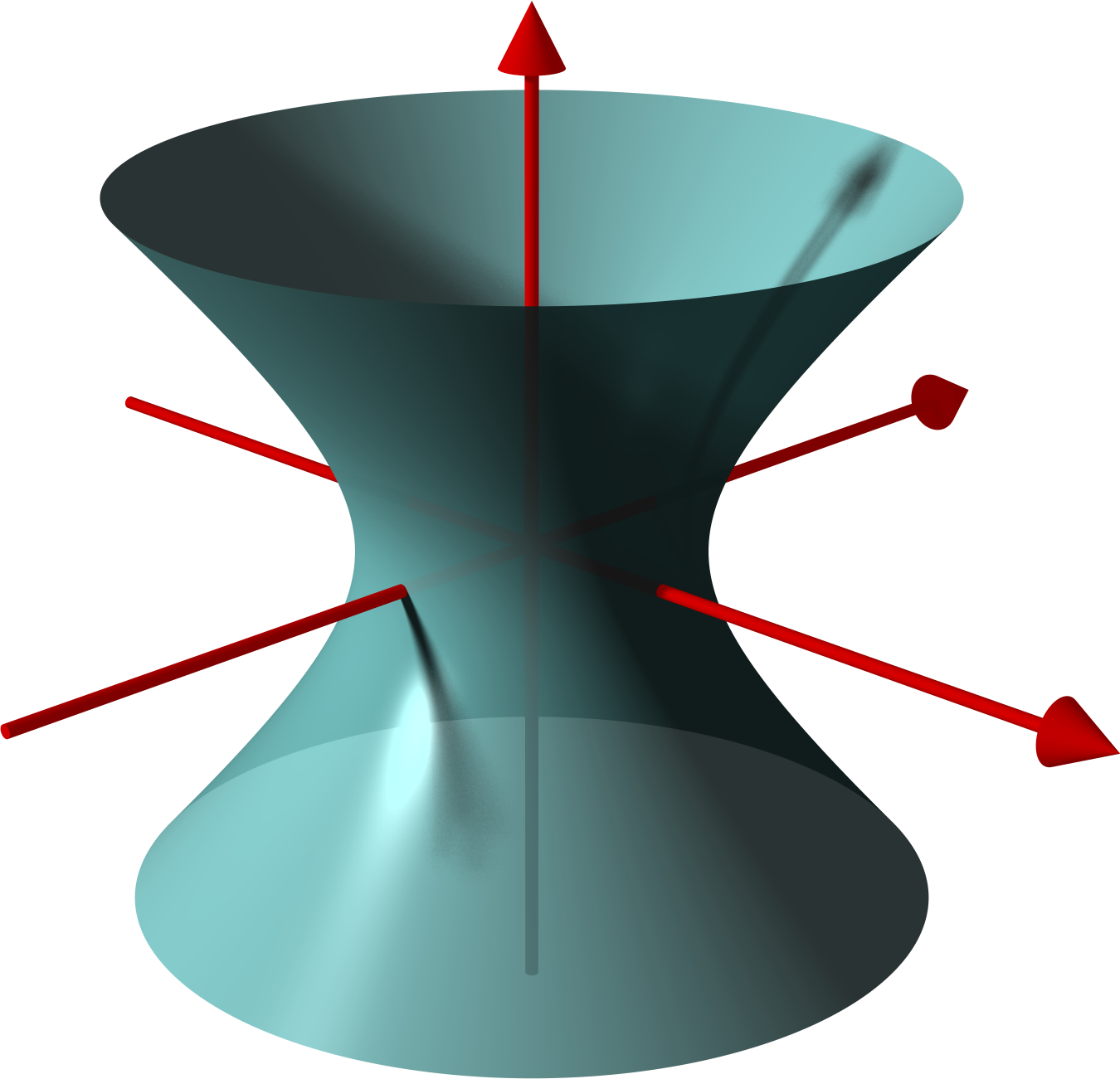|
Agena (rocket)
The RM-81 Agena was an American rocket upper stage and satellite bus which was developed by Lockheed Corporation initially for the canceled WS-117L reconnaissance satellite program. Following the split-up of WS-117L into SAMOS and Corona for image intelligence, and MIDAS for early warning, the Agena was later used as an upper stage, and an integrated component, for several programs, including Corona reconnaissance satellites and the Agena Target Vehicle used to demonstrate rendezvous and docking during Project Gemini. It was used as an upper stage on the Atlas, Thor, Thorad and Titan IIIB rockets, and considered for others including the Space Shuttle and Atlas V. A total of 365 Agena rockets were launched between February 28, 1959 and February 1987. Only 33 Agenas carried NASA payloads and the vast majority were for DoD programs. On some missions, the payload was built directly into the Agena, which provided it with electric power, communications and three-axis stabilization ... [...More Info...] [...Related Items...] OR: [Wikipedia] [Google] [Baidu] |
Space Shuttle
The Space Shuttle is a retired, partially reusable low Earth orbital spacecraft system operated from 1981 to 2011 by the U.S. National Aeronautics and Space Administration (NASA) as part of the Space Shuttle program. Its official program name was Space Transportation System (STS), taken from a 1969 plan for a system of reusable spacecraft where it was the only item funded for development. The first ( STS-1) of four orbital test flights occurred in 1981, leading to operational flights (STS-5) beginning in 1982. Five complete Space Shuttle orbiter vehicles were built and flown on a total of 135 missions from 1981 to 2011. They launched from the Kennedy Space Center (KSC) in Florida. Operational missions launched numerous satellites, interplanetary probes, and the Hubble Space Telescope (HST), conducted science experiments in orbit, participated in the Shuttle-''Mir'' program with Russia, and participated in construction and servicing of the International Space Station (ISS). ... [...More Info...] [...Related Items...] OR: [Wikipedia] [Google] [Baidu] |
XLR-81-BA
The Bell Aerosystems Company XLR81 (Model 8096) was an American liquid-propellant rocket engine, which was used on the Agena upper stage. It burned UDMH and RFNA fed by a turbopump in a fuel rich gas generator cycle. The turbopump had a single turbine with a gearbox to transmit power to the oxidizer and fuel pumps. The thrust chamber was all-aluminum, and regeneratively cooled by oxidizer flowing through gun-drilled passages in the combustion chamber and throat walls. The nozzle was a titanium radiatively cooled extension. The engine was mounted on a hydraulic actuated gimbal which enabled thrust vectoring to control pitch and yaw. Engine thrust and mixture ratio were controlled by cavitating flow venturis on the gas generator flow circuit. Engine start was achieved by solid propellant start cartridge. Variants Starting as an air-launched missile engine and finishing as a multi-mission general propulsion for the space age, the basic design went through a series of iterat ... [...More Info...] [...Related Items...] OR: [Wikipedia] [Google] [Baidu] |
Hyperboloid
In geometry, a hyperboloid of revolution, sometimes called a circular hyperboloid, is the surface generated by rotating a hyperbola around one of its principal axes. A hyperboloid is the surface obtained from a hyperboloid of revolution by deforming it by means of directional scalings, or more generally, of an affine transformation. A hyperboloid is a quadric surface, that is, a surface defined as the zero set of a polynomial of degree two in three variables. Among quadric surfaces, a hyperboloid is characterized by not being a cone or a cylinder, having a center of symmetry, and intersecting many planes into hyperbolas. A hyperboloid has three pairwise perpendicular axes of symmetry, and three pairwise perpendicular planes of symmetry. Given a hyperboloid, one can choose a Cartesian coordinate system such that the hyperboloid is defined by one of the following equations: : + - = 1, or : + - = -1. The coordinate axes are axes of symmetry of the hyperboloid and the ori ... [...More Info...] [...Related Items...] OR: [Wikipedia] [Google] [Baidu] |
Gun Drill
Gun drills (through coolant drill) are straight fluted drills which allow cutting fluid (either compressed air or a suitable liquid) to be injected through the drill's hollow body to the cutting face. They are used for deep hole drilling—a depth-to-diameter ratio of 300:1 or more is possible. Gun barrels are the obvious example; hence the name. Other uses include moldmaking, diemaking, and the manufacture of combustion engine parts such as crankcase, cylinder head, and woodwind musical instruments, such as uilleann pipes, as gun drills can drill long straight holes in metal, wood, and some plastics. The coolant provides lubrication and cooling to the cutting edges and removes the swarf or chips from the hole. Modern gun drills use carbide tips to prolong life and reduce total cost when compared with steel tips. Speed of drilling depends on the material being drilled, rotational speed, and the drill diameter; a high speed drill can cut a hole in P20 steel at 30 inch ... [...More Info...] [...Related Items...] OR: [Wikipedia] [Google] [Baidu] |
Aluminum
Aluminium (aluminum in American and Canadian English) is a chemical element with the symbol Al and atomic number 13. Aluminium has a density lower than those of other common metals, at approximately one third that of steel. It has a great affinity towards oxygen, and forms a protective layer of oxide on the surface when exposed to air. Aluminium visually resembles silver, both in its color and in its great ability to reflect light. It is soft, non-magnetic and ductile. It has one stable isotope, 27Al; this isotope is very common, making aluminium the twelfth most common element in the Universe. The radioactivity of 26Al is used in radiodating. Chemically, aluminium is a post-transition metal in the boron group; as is common for the group, aluminium forms compounds primarily in the +3 oxidation state. The aluminium cation Al3+ is small and highly charged; as such, it is polarizing, and bonds aluminium forms tend towards covalency. The strong affinity towards ox ... [...More Info...] [...Related Items...] OR: [Wikipedia] [Google] [Baidu] |
Radio
Radio is the technology of signaling and communicating using radio waves. Radio waves are electromagnetic waves of frequency between 30 hertz (Hz) and 300 gigahertz (GHz). They are generated by an electronic device called a transmitter connected to an antenna which radiates the waves, and received by another antenna connected to a radio receiver. Radio is very widely used in modern technology, in radio communication, radar, radio navigation, remote control, remote sensing, and other applications. In radio communication, used in radio and television broadcasting, cell phones, two-way radios, wireless networking, and satellite communication, among numerous other uses, radio waves are used to carry information across space from a transmitter to a receiver, by modulating the radio signal (impressing an information signal on the radio wave by varying some aspect of the wave) in the transmitter. In radar, used to locate and track objects like aircraft, ships, spacecraf ... [...More Info...] [...Related Items...] OR: [Wikipedia] [Google] [Baidu] |
Hypergolic
A hypergolic propellant is a rocket propellant combination used in a rocket engine, whose components spontaneously ignite when they come into contact with each other. The two propellant components usually consist of a fuel and an oxidizer. The main advantages of hypergolic propellants are that they can be stored as liquids at room temperature and that engines which are powered by them are easy to ignite reliably and repeatedly. Common hypergolic propellants are difficult to handle due to their extreme toxicity and/or corrosiveness. In contemporary usage, the terms "hypergol" and "hypergolic propellant" usually mean the most common such propellant combination: dinitrogen tetroxide plus hydrazine and/or its relatives monomethylhydrazine (MMH) and unsymmetrical dimethylhydrazine (UDMH). History In 1935, Hellmuth Walter discovered that hydrazine hydrate was hypergolic with high-test peroxide of 80-83%. He was probably the first to discover this phenomenon, and set to work devel ... [...More Info...] [...Related Items...] OR: [Wikipedia] [Google] [Baidu] |
Inhibited Red Fuming Nitric Acid
Red fuming nitric acid (RFNA) is a storable oxidizer used as a rocket propellant. It consists of 84% nitric acid (), 13% dinitrogen tetroxide and 1–2% water. The color of red fuming nitric acid is due to the dinitrogen tetroxide, which breaks down partially to form nitrogen dioxide. The nitrogen dioxide dissolves until the liquid is saturated, and produces toxic fumes with a suffocating odor. RFNA increases the flammability of combustible materials and is highly exothermic when reacting with water. It is usually used with an inhibitor (with various, sometimes secret, substances, including hydrogen fluoride; any such combination is called ''inhibited RFNA'', ''IRFNA'') because nitric acid attacks most container materials. Hydrogen fluoride for instance will passivate the container metal with a thin layer of metal fluoride, making it nearly impervious to the nitric acid. It can also be a component of a monopropellant; with substances like amine nitrates dissolved in it, it can ... [...More Info...] [...Related Items...] OR: [Wikipedia] [Google] [Baidu] |
Unsymmetrical Dimethylhydrazine
Unsymmetrical dimethylhydrazine (UDMH; 1,1-dimethylhydrazine, НДМГ or codenamed Geptil) is a chemical compound with the formula H2NN(CH3)2 that is used as a rocket propellant. It is a colorless liquid, with a sharp, fishy, ammonia-like smell typical for organic amines. Samples turn yellowish on exposure to air and absorb oxygen and carbon dioxide. It is miscible with water, ethanol, and kerosene. In concentration between 2.5% and 95% in air, its vapors are flammable. It is not sensitive to shock. Symmetrical dimethylhydrazine, 1,2-dimethylhydrazine is also known but is not as useful. Production UDMH is produced industrially by two routes. Based on the Olin Raschig process, one method involves reaction of monochloramine with dimethylamine giving 1,1-dimethylhydrazinium chloride: :(CH3)2NH + NH2Cl → (CH3)2NNH2 ⋅ HCl In the presence of suitable catalysts, acetylhydrazine can be N-dimethylated using formaldehyde and hydrogen to give the N,N-dimethyl-N'-acetylhydrazine, w ... [...More Info...] [...Related Items...] OR: [Wikipedia] [Google] [Baidu] |
Bell Aircraft
The Bell Aircraft Corporation was an American aircraft manufacturer, a builder of several types of fighter aircraft for World War II but most famous for the Bell X-1, the first supersonic aircraft, and for the development and production of many important civilian and military helicopters. Bell also developed the Reaction Control System for the Mercury Spacecraft, North American X-15, and Bell Rocket Belt. The company was purchased in 1960 by Textron, and lives on as Bell Textron. History As a pilot, Larry Bell saw his first plane at an air show, starting a lifelong fascination with aviation. Bell dropped out of high school in 1912 to join his brother in the burgeoning aircraft industry at the Glenn L. Martin Company, where by 1914 he had become shop superintendent. By 1920, Bell was vice president and general manager of Martin, then based in Cleveland. Feeling that he deserved part ownership, in late 1924, he presented Martin with an ultimatum. Mr. Martin refused, and Bell q ... [...More Info...] [...Related Items...] OR: [Wikipedia] [Google] [Baidu] |
Beta Centauri
Beta Centauri is a triple star system in the southern constellation of Centaurus. It is officially called Hadar (). The Bayer designation of Beta Centauri is Latinised from β Centauri, and abbreviated Beta Cen or β Cen. The system's combined apparent visual magnitude of 0.61 makes it the second-brightest object in Centaurus and one of the brightest stars in the night sky. According to parallax measurements from the astrometric Hipparcos satellite, the distance to this system is about . Nomenclature ''β Centauri'' (Latinised to ''Beta Centauri'') is the star system's Bayer designation. It bore the traditional names ''Hadar'' and ''Agena''. ''Hadar'' comes from the Arabic حضار (the root's meaning is "to be present" or "on the ground" or "settled, civilized area"), while the name ''Agena'' is thought to be derived from the Latin ''genua'', meaning "knees", from the star's position on the left knee of the centaur depicted in the constellation Centaurus. In 2 ... [...More Info...] [...Related Items...] OR: [Wikipedia] [Google] [Baidu] |








